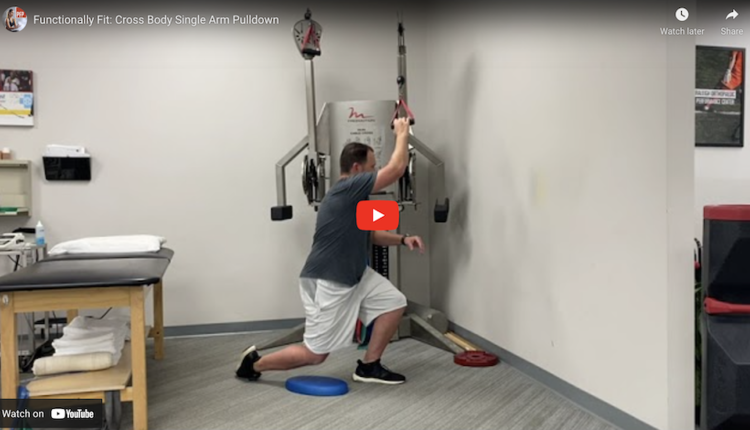Split squats offer an effective way to improve lower body strength and stability. This exercise variation using a kettlebell offers a dynamic version with multiple progressions to challenge balance and core stability.


Execution:
Place a slider under the ball of the right foot. Holding the kettle bell in the right hand, slowly slide the right foot back and descend into a split squat position. Makes sure the left knee is pointing straight ahead and the spine angle remains neutral throughout. Pause for 1 second at the bottom and then return to the upright position. Repeat for 8-12 reps or a set amount of tine, and then repeat on the other side by placing the slider beneath the left foot. The goal is also to maintain stability and proper alignment in the stationary leg and not allow the femur to internally rotate or the hip to adduct toward midline. Avoid lumbar hyperextension as this is a common compensatory strategy to gain hip extension if the psoas is tight. You may also witness external rotation of the sliding foot/leg. I generally advocate a cadence of 2/1/2 or 2/1/1.
Regression:
1. Reduce the weight or begin with bodyweight alone
Progressions:
1. Place the kettle bell in a goblet squat position
2. Hold the kettle bell with arms full extended at shoulder height
3. Perform the exercise while holding the kettle bell overhead
Application:
Asymmetrical lower extremity weakness, decreased hip and core stability as well as diminished balance can negatively impact performance or daily function. The sliding split squat offers a way to facilitate improved strength and stability on the stationary leg and throughout the pillar. In addition, the slider allows for a progressive and incremental amount of movement that can be controlled by the client. If for any reason the exercise proves too challenging for the client in terms of balance/control, allow them to use the hand opposite the sliding leg to hold onto a table or foam roller to increase stability. For those with any active back or shoulder pathology, the arms extended and overhead version may create additional strain in those areas, so proceed with caution and reduce weight if needed.















